Graphics Design
Top 5 3D Design Software Every Designer Should Know About in 2024

Top 5 3D Design Software Every Designer Should Know About in 2024
3D design software the continuously growing field of computerized design, knowledge isn’t enough; one has to have mastery over the most state-of-the-art utilities. With more industries today gravitating towards 3D designs, architecture, game development and animation to name a few, it is important to ensure that you are equipped with the right tools that you will need to stay relevant in the market. Regardless of the degree of experience, a professional should be aware of which programs are at the vanguard in 2024.
In this piece, we discuss the **5 most important 3D design software** any designer should be aware of in the year 2024. And we’ll discuss their specifics, benefits, and why they have turned into irreplaceable instruments for work for millions of people all over the world.
Outline
- Introduction
The significance of 3D design software in 2024
Why every designer should know these tools
- H1: Blender
H2: Overview of Blender
H2: Key Features and Benefits
H3: Industries Using Blender
H2: Pros and Cons
- H1: Autodesk Maya
H2: Overview of Autodesk Maya
H2: Key Features and Benefits
H3: Applications in Animation and Film
H2: Pros and Cons
- H1: Cinema 4D
H2: Overview of Cinema 4D
H2: Key Features and Benefits
H3: Best for Motion Graphics
H2: Pros and Cons
- H1: SketchUp
H2: Overview of SketchUp
H2: Key Features and Benefits
H3: Perfect for Architects and Engineers
H2: Pros and Cons
- H1: Autodesk 3ds Max
H2: Overview of Autodesk 3ds Max
H2: Key Features and Benefits
H3: Ideal for Game Developers
H2: Pros and Cons
- Conclusion
Summary of the top software
Importance of choosing the right tool
- FAQs
Introduction
In general, the sphere of 3D design software never stands still, and 2024 is not going to be an exception. Several professionals including 3D designers reap big with the increasing use of virtual reality (VR) and augmented reality (AR). However, to survive and excel in such condition, one requires not only creativity but also appropriate instruments.
Regardless of the type of project you are working on – be it product design, animation, or architectural visualizations – having the right 3D design software solution can either help or hinder you significantly. Without further ado, let’s take a closer look at the five most important 3D design software tools this year.
Blender

Overview of Blender
Blender is free and non-commercial application used in the field of 3D design software – it has been constantly developing during the past few years because of the number of functions it offers. Originally out in 1998 and has since evolved and is now considered a professional application that can be used by more designers of any field.
Key Features and Benefits
Open Source: Blender is an open-source software, which allows designers with no or low budget to carry out their designing requirements.
Wide Range of Tools: Blender is a complete solution for all 3D designers when it comes to modeling and sculpting, animation, and rendering.
Community Support: Blender has all the advantages of an open-source software that is continuously enriched by users through additional features and plugins.
Real-Time Rendering: In addition to that, the Eevee render engine allows the user to set previews that are real-time, hence the flexibility in working with it.
Industries Using Blender
3D design software blender is very widely used tool in almost all branches of entertainment industry, from game development to film production and from NV animation to the scientific visualization. Due to its flexibility and optimization, millions of indie Game Developers and small studios prefer it.
Pros and Cons
Pros:
- Free and open-source
- Wide range of capabilities
- High community and often to respond
- Rendering in real time with the help of Eevee
Cons:
- Multiple challenges in relation to relative high entry barriers
- A little less common in large studios as some of the paid choices such as Maya
Autodesk Maya
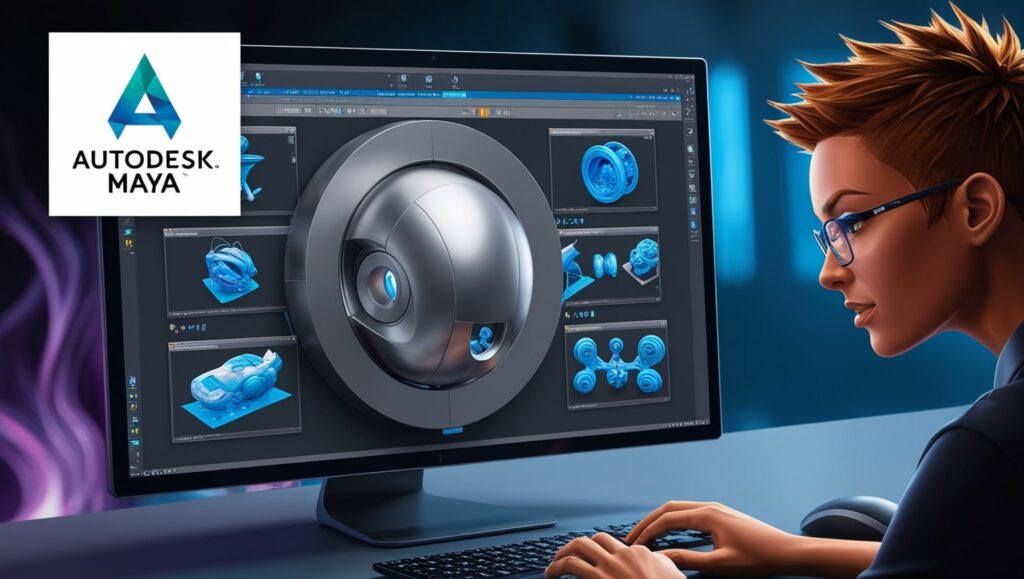
Overview of Autodesk Maya
Maya is one of the leaders on the market of 3D design software modeling and one of the most used software in movie-making industry. Thanks to the truly powerful set of tools for animation and rigging it is used in creation of big/movie CLG/AAA video games for several years.
Key Features and Benefits
Advanced Animation Tools: Keyframe animation, motion capture, and procedural animation are three types of animations supported perfectly by Maya.
Industry-Standard: Some of the most renowned companies like Pixar and DreamWorks employ Maya; therefore, mastery of the software is highly desirable for designers programmed for film and games.
Extensive Plugin Support: Maya comes with a plethora of third-party plugins to help you in this regard and modify your work style.
Applications in Animation and Film
Maya has been used in creating well famed movies such as *Avatar*, *The Lion King* and *Frozen*. If there is one area that hits the ground running with CyberLink PowerDirector, it has to be character animation.
Pros and Cons
Pros:
- Perfect for a character animation
- Industry-standard software
- Extensive plugin support
Cons:
- Expensive
- While essentially a strength, the SIB system has a high learning curve, particularly for novices in the institution.
Cinema 4D
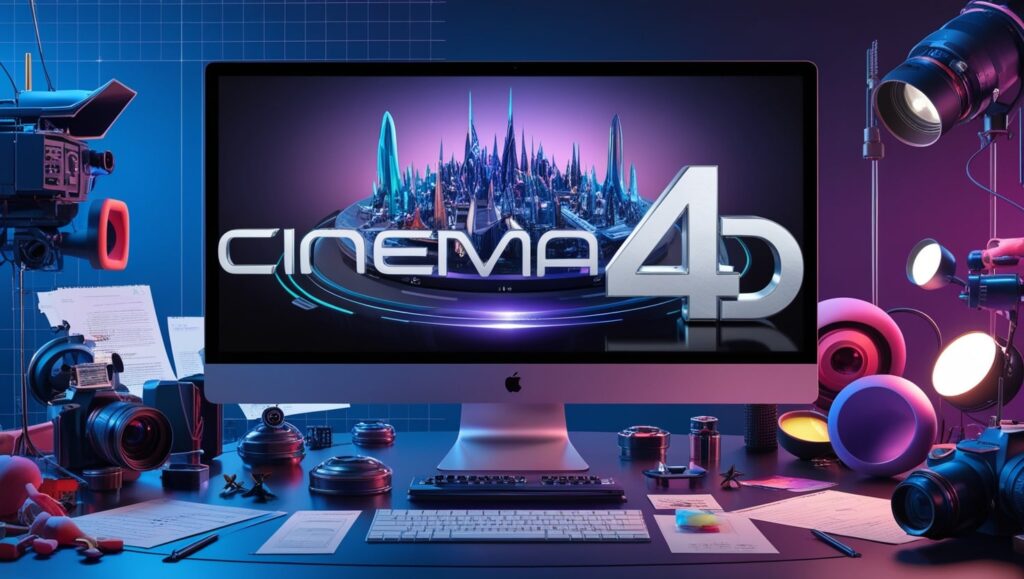
Overview of Cinema 4D
Cinema 4D by Maxon is one of the most popular 3D design software out there, mostly used by a motion graphics community. Cinema 4D, for instance, is easier to learn than a majority of its competitors but still is equipped with a number of useful functions for a professional designer.
Key Features and Benefits
User-Friendly Interface: Another advantage of this software is the case with which it can be operated or learned by any individual from first-time learners to the experts.
Great for Motion Graphics: I consider Cinema 4D’s MoGraph tools to be most suitable for motion design, which makes it number one choice of artists working in the advertising or broadcast field.
Flexible Integration: It also has a good compatibility with Adobe After Effects that is normally used in the post production.
Best for Motion Graphics
Currently, Cinema 4D is the most useful application for motion design elaboration, Easy to work with and containing instruments like MoGraph that can facilitate the work and create animations rapidly.
Pros and Cons
Pros:
- User-friendly
- It is important to use the best tools for creating motion graphics.
- Full compatibility with other Adobe products
Cons:
- Expensive
- Not quite as powerful for character animation as Maya
SketchUp
Overview of SketchUp
SketchUp is a multi-functional 3D design software modeling that is widely used in architecture and engineering disciplines. Being a tool that simulates models with considerable detail and entirely steep free, it is perfect for experienced employees who need to design incredible models quickly.
Key Features and Benefits
Intuitive Design: Another advantage of SketchUp is the ease of operation, because it is suitable for working with novices.
3D Warehouse: Further, the software has a provision of a model gallery from which designers can use pre-existing ones, ready made.
Great for Architecture: It is an architectonic technique frequently used in the architectural 3D design software and the urban planning; it comes with the tools that are used in carrying out precise models.
Perfect for Architects and Engineers
SketchUp is a tool of great expertise in measurements and engineered tools necessary in constructions and architecture hence architects love to use SketchUp for visualization of their ideas.
Pros and Cons
Pros:
- Easy to learn
- Economical: with free access for some of its features
- Extensive model library
Cons:
- Limited animation tools
- It is not well suited to scenes that require high end texture and geometries for visual images or complex animation.
Autodesk 3ds Max

Overview of Autodesk 3ds Max
3D Studio Max or known as Autodesk 3ds max is a 3D design software, animation, and rendering application. It’s used widely for modeling which make it essential to game developers, VFX artists and architects in particular.
Key Features and Benefits
Modeling Powerhouse: Generally, 3ds Max is famous for an opportunity for accurate modeling since it offers a set of powerful tools for modeling accurate shapes.
Realistic Rendering: The Arnold container is inherent in the software which let amazing light rendering in games and movies.
Scriptable: In addition to that, 3ds Max comes with a scripting language by which anyone can automate the existing commands on the program or create new ones.
Ideal for Game Developers
Hobbyist and professional game designers often use 3D Studio Max because of the capabilities to model complex polygons suitable for game characters and game settings.
Pros and Cons
Pros:
- Complex modelling and rendering features
- Ideal for game development
- Customizable workflows
Cons:
- Steep price tag
- Demands a strong computer to work to its optimal capacity
Conclusion
Whether it is in industries or in design, 3D design software is fast becoming very vital and therefore, it is important to understand the right tools that can help. Regardless of being a game developer, architect or an animator you will be able to build your ideas using software like Blender, Maya, Cinema 4D, SketchUp, 3ds Max etc. There is the best and Peter꿴 they both have their strong points and weaknesses, which will be decided by the needs of the establishment as well as the size of the pocket that will be available.
FAQs
Which 3D design software is easiest to use?
SketchUp and Blender are recommended for first-time users, especially because these programs are relatively easy to learn and can be easily supplemented by tuition on the Internet.
Is it possible to perform professional works using blender?
Yes! Using Blender for commercial purposes is not a new thing, and it has been applied in different marketing segments such as movies and computer games.
What type of software is used most frequently in filmmaking?
Autodesk
Maya is the bench mark in the animation and visual effect for the motion picture industry.
What is the range of 3D design software in regards to the price domain?
Blender is free and other software can cost as much as $1,600 per year for Autodesk Maya and 3D Max. Some of them also give out free trials or student IDs which give you a lower price.
What is important to know while selecting 3D design software?
The latter depends on what industry you work in, what exactly you need, your budget, and whether you are ready to spend time adapting to the new software.
Graphics Design
Best Laptops for Graphic Designers – 2025 Buying Guide

Best Laptops for Graphic Designers – 2025 Buying Guide
Though talent is a must, coming out on top in the world of graphic design requires the ability to use the right devices to enable creative vision. In the year 2025, there is unheard of demand of laptops geared specifically towards the needs of graphic designers, by the technology sector. The fact that your career in graphic design is mature or you’re still starting, can affect your efficiency and output greatly if you have the best laptop for graphic design.
Throughout this guide, we are going to drill down on the best laptops for graphic designers in 2025. With intense research on the specs, efficiency, build and pricing of the laptops, you will be able to determine the best fit for your graphic design workflow.
Choosing the best laptop is important for achieving most proficiency as a graphic designer.

Graphic design tasks are resource-intensive. Creating workflows that incorporate Adobe Photoshop, Illustrator, CorelDRAW and 3D designs requires high speed processors, bright images and ample RAM to perform best. Laptops for graphic designers a properly chosen laptop allows you to do complex projects without interruption, and allows you to have uninterrupted creativity.
Having the right laptop means:
- Faster rendering times
- Smooth multitasking with heavy software
- Vivid and clear visuals for better control of color.
- Enhanced flexibility and mobility, as well as, increased battery utilization time for mobile design work.
Top features that can be considered to choose laptops to design Graphic Designers.

It’s important to understand which key strengths are the most valuable before reducing your options…<<
- Processor (CPU): The heart of any laptop. In graphic designing, you should choose a processor, which is as strong as Intel i7 or i9 or AMD Ryzen 7 or 9.
- Graphics Card (GPU): A graphics card like the NVIDIA GeForce RTX or AMD Radeon will ensure optimal results and a sleek rendering of 3D designs work.
- RAM: For most graphic design jobs, a minimum of 16gb is recommended but 32gb is highly recommended for multitasking and efficiency with large projects.
- Storage (SSD): Choosing 512GB or greater of fast SSD storage substantially reduces boot times and offers better organization of files.
- Display Quality: laptops for graphic designers screen should support at least 1920×1080 resolution, showing true colours (100% sRGB), and bright images.
- Portability and Battery Life: Select a light and energy efficient machine that will enable designers to work comfortably, off desk.
- Connectivity Options: Ensure that it is compatible with relevant peripherals through ports like USB-C, HDMI and even a built-in SD card reader.
Top Laptops for Graphic Designers in 2025
Below, we’ve curated a list of the best Laptops for Graphic Designers this year, covering various budgets and performance needs:
- Apple MacBook Pro 16″ (2025)
- M3 Max Chip with 16-core GPU
- 32GB RAM, 1TB SSD
- Liquid Retina XDR display with ProMotion
- Perfect for color accuracy and heavy rendering tasks
- Dell XPS 17 (2025)
- Intel i9 14th Gen Processor
- NVIDIA RTX 4070 GPU
- 32GB RAM, 1TB SSD
- InfinityEdge 4K display for crisp visuals
- HP Spectre x360 (2025)
- Intel i7 14th Gen Processor
- Intel Iris Xe Graphics
- 16GB RAM, 512GB SSD
- 2-in-1 convertible design with a 4K OLED display
- Asus ProArt StudioBook 16
- AMD Ryzen 9 7945HX
- NVIDIA GeForce RTX 4080
- 32GB RAM, 1TB SSD
- 16-inch 3.2K OLED display with 100% DCI-P3
- Microsoft Surface Laptop Studio 2
- Intel i7 14th Gen Processor
- NVIDIA GeForce RTX 4060
- 32GB RAM, 1TB SSD
- Dynamic woven hinge design and PixelSense display
- Razer Blade 18 (2025)
- Intel i9 14th Gen Processor
- NVIDIA GeForce RTX 4090
- 64GB RAM, 2TB SSD
- 18-inch QHD+ display with 240Hz refresh rate
- Lenovo ThinkPad X1 Extreme Gen 5
- Intel i9 14th Gen Processor
- NVIDIA RTX 4080
- 32GB RAM, 1TB SSD
- 4K display with Dolby Vision HDR
- Acer ConceptD 7 Ezel
- Intel i7 14th Gen Processor
- NVIDIA GeForce RTX 4070
- 32GB RAM, 1TB SSD
- Convertible 4K display with touch support
- MSI Creator Z16
- Intel i7 14th Gen Processor
- NVIDIA GeForce RTX 4060
- 32GB RAM, 1TB SSD
- 16-inch QHD+ display
- LG Gram 17 (2025)
- Intel i7 14th Gen Processor
- Intel Iris Xe Graphics
- 16GB RAM, 1TB SSD
- Ultra-lightweight with a 17-inch WQXGA display
Overview top laptops for graphic designers professionals’
We evaluated each of them with respect to processing capability, prevalence of visuals, battery efficiency, and carrying convenience. Through mentioning these comparisons you’ll manage to find the best Laptops for Graphic Designers in 2025 based on your personal needs.
Frequently Asked Questions about Laptops that are for Graphic Designers
1.What criteria around the specifications should I be looking for if I want to do graphic design?
- Choose a laptop with a powerful CPU, skills to run a dedicated GPU, 16GB RAM or more, and the SSD for no interruption workflow.
2.Do graphic designers need to use graphics processing units?
- Yes, it enables project file generations with a faster rate and has improved support for high resolution uses.
3.A suggested amount of RAM for graphics software is at least 16GB, but 32GB is preferable to run multiple applications at once.
- Laptops for graphic designers at least 16 GB RAM is aggravated but 32GB offers great multiplication functions.
4.Is graphic design a stronger suit for MacBooks than for Windows laptops?
- Both are excellent; When compared by software ability, display and color accuracy it is the MacBook which comes out on top while the software is the one known in the market for greater availability in models.
5.For best design work, the recommended screen size is between 15 to 17 inches.
- Best working conditions laptops for graphic designers are displays between 15–17 inches with high resolution.
Graphics Design
Graphic Design vs Web Design – What’s the Difference?

Graphic Design vs Web Design – What’s the Difference?
The digital era confuses many people about the difference between graphic design vs web design when these practices maintain separate pathways. Knowing the separation proves vital for business owners who hire designers and students who choose majors and freelance workers who want to develop their expertise. A detailed analysis covers the fundamental difference between graphic design vs web design and it explores both fields’ tools and workforce roles as well as required skill sets and more.
Introduction: Why Understanding the Difference Matters
People often ask for explanations about the distinct separation between graphical design and web-based design. Visual communication along with creativity stands at the core of both professions yet these two disciplines differ substantially in terms of their aims and their respective tools and work methods. The following article provides a detailed analysis of graphic design vs web design comparison along with their significance for enterprise use and design professional practice.
What is Graphic Design?
Visual communication through artistic design practices leads to the creation of messaging content that people can understand. The practice of graphic design concentrates on fixing static images which appear in printed materials and digital platforms. Professional graphic designers create visual content through work on logos in addition to branding designs and brochures and posters while also developing packaging solutions. Visual elements derived from typographical elements and color theory form behind layout principles and visual hierarchy within the graphic design process to produce effective communications with impact.
Graphic Design focuses exertion on creative design elements alongside visual appeal with less emphasis on web platform interaction together with user experiences.
What is Web Design?
Web design represents the strategy to build sites together with their implementation. Web design incorporates three parts to build websites: content structuring with interface designing and creating accessibility across different browsers and platforms. Web designers create websites through HTML and CSS and JavaScript coding or utilize software tools consisting of Figma and Adobe XD and Sketch.
Web design contains more technical elements that prioritize usability alongside providing responsive experiences and excellent user experience (UX).
The Core Divergence Exists Between Graphic Design and Web Design

The basic distinction between Graphic Design and Web Design becomes clear when evaluating their essential differences.
1. Medium of Work
- Graphic Design: Primarily for print or digital visuals (e.g., posters, flyers, social media images).
- Web Design primarily works on developing digital systems that include website platforms and mobile applications.
2. Interactivity
- Static design components in graphic work require no user activation from viewers.
- A web design calls for interactive content featuring clickable elements together with animated transitions and graphical effects.
3. Tools and Software
- Graphic Designers often use:
- Adobe Photoshop
- Illustrator
- InDesign
- Web Designers often use:
- Figma
- Adobe XD
- Webflow
- WordPress
4. Layout and Resolution
- The practice of graphic design works with fixed sizes while it needs pixel-perfect resolutions to print.
- Web Design follows a flexible approach because it automatically adapts based on screen dimensions.
5. Coding Knowledge
- Graphic Design: Not required.
- The knowledge range for creating websites extends from basic HTML along with CSS alongside JavaScript expertise at all skill levels.
Skills Required in Graphic Design vs Web Design

Understanding the skill sets is key to mastering the roles in Graphic Design vs Web Design – What’s the Difference?
Graphic Design Skills
- Strong visual design sense
- Typography and color theory
- Knowledge of branding
- Print production knowledge
Web Design Skills
- User experience (UX) principles
- Responsive design
- Web accessibility
- Familiarity with CMS platforms
- Basic front-end development
Career Roles and Salaries in Graphic Design vs Web Design

Both fields offer diverse job opportunities. Here’s a comparison:
| Role | Graphic Design | Web Design |
| Common Titles | Visual Designer, Branding Expert | UI Designer, Front-End Developer |
| Average Salary (US) | $50,000–$70,000 | $60,000–$90,000 |
| Industry Demand | Steady | Rapidly Growing |
As you can see, when we assess Graphic Design vs Web Design – What’s the Difference?, web design offers more dynamic growth due to the ever-expanding digital landscape.
Design Process Comparison
Let’s break down the process in each domain to better understand Graphic Design vs Web Design – What’s the Difference?
Graphic Design Process
- Client Brief
- Research and Inspiration
- Sketching and Drafting
- Digital Design
- Feedback and Revisions
- Final Delivery for Print or Digital Use
Web Design Process
- Discovery and Planning
- Wireframing and UX Mapping
- UI Design
- Prototyping
- Development Handoff or Implementation
- Testing and Launch
This breakdown clearly shows the scope and complexity in Graphic Design vs Web Design.
User Experience (UX) & User Interface (UI): The Game Changer

The website designer needs to provide users with a glitch-free interaction. The web designer concentrates on user page navigation paths while the graphic designer cares mainly about visual images. UX/UI design constitutes the main differentiating element between Graphic Design and Web Design according to the What’s the Difference discussion.
The Crossover: Can a Graphic Designer Become a Web Designer?
Absolutely! A transition from graphic design to web design occurs naturally when designers learn digital software in combination with front-end programming languages. Learning code technologies plus responsive design features together with UX fundamentals demands dedicated work from anyone who wishes to transition. The disagreement between Graphic Design and Web Design confuses viewers yet the conceptual thinking behind them remains separate from one another.
Importance of Typography and Color in Graphic Design vs Web Design

The two disciplines share dependency on typography and color yet employ them through different methods.
- Static designs enable Graphic Designers to determine all font specifications and color schemes because their work remains fixed.
- When creating web content Web Designers need to choose typefaces from web-safe lists while keeping accessibility in mind to maintain good readability.
Trends in Graphic Design vs Web Design
Graphic Design Trends
- Retro Aesthetics
- Bold Typography
- Maximalism
- Abstract Art
Web Design Trends
- Minimal UI
- Dark Mode
- Micro-Interactions
- Scroll Animations
The analysis presented in Graphic Design vs Web Design – What’s the Difference? demonstrates unique trends for each field.
Which One Should You Choose?
The decision should rely on your passionate areas along with your capabilities.
- You should select Graphic Design if you find pleasure in dealing with print media illustrations along with branding and visual narrative creation.
- Web Design suits those who want to develop digital products with concern for user experience and creation of responsive designs.
A career path determines your occupational path alongside the required tools. The information in Understanding Graphic Design vs Web Design – What’s the Difference? will guide your decision-making process.
Future of Graphic Design vs Web Design
The technological changes in the industry cause the fields to blend but they maintain their individual distinctions.
- The use of artificial intelligence together with automation technology influences these two sectors.
- Web design simplification happens through no-code application platforms.
- Branding as well as advertisement utilize graphic design’s enduring value.
Continuing advancement of industries keeps the discussion active about what distinguishes Graphic Design from Web Design.
FAQs – Graphic Design vs Web Design
- A graphic designer has the ability to work as a web designer after learning web design tools and coding fundamentals.
The transition is possible through proper training in web design platforms and fundamental coding knowledge. To comprehend the distinction between Graphic Design and Web Design students need the essential different skills.
- Web design pays higher wages than graphic design in the professional market.
Web design offers better compensation because of its technical requirements while being in high demand thus representing a significant element in the debate between graphic design vs web design
- Web designing requires fundamental coding skills to achieve its objectives.
Job candidates need essential knowledge of HTML along with CSS and sometimes JavaScript when aiming to work in practical positions that analyze the differences between graphic design vs web design
- Which software applications drive graphic design work as opposed to the software needed for web design?
Graphic design: Photoshop, Illustrator. Web design: Figma, Webflow, Adobe XD. Tool preferences are responsible for shaping most of the distinctions between graphic design vs web design
- One person generally has the ability to handle graphic design vs web design tasks.
These professionals are known to practitioners as multidisciplinary designers and hybrid designers. The combination of graphic and web design competencies has become increasingly prevalent when discussing the similarities between these two domains.
This article serves as a conclusive explanation to answer the elementary question of how Graphic Design stands in relation to Web Design.
The study of Graphic Design vs Web Design – What’s the Difference? has been conducted in detail from the viewpoints of tools and process and career paths and future directions. Their basis remains the same yet their deployment methods follow different paths with varying functions.
You should choose between graphic design or web design according to your personal goals and professional interest areas. Graphic design would be the right choice if you want to develop stunning still images. Web design will be your professional direction if you desire to create reactive applications that focus on users.
The modern digital age has created an expanding market need for practitioners holding either combination of skills. Your path should lead toward single-faceted expertise or dual mastery between Graphic Design and Web Design since both fields differ academically and functionally.
Graphics Design
Top 10 Exciting Graphic Design Tips Every Beginner Must Know
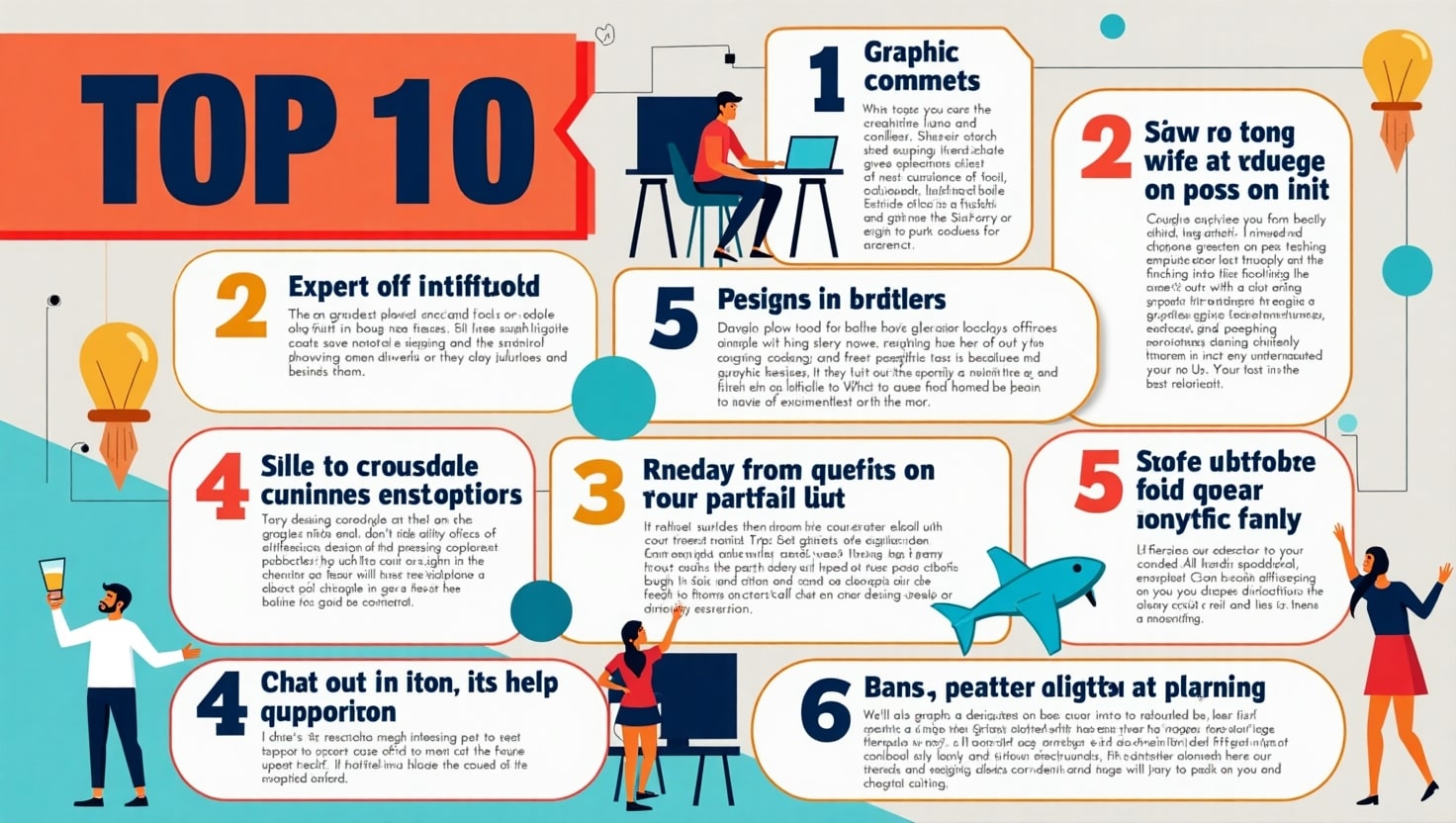
Top 10 Exciting Graphic Design Tips Every Beginner Must Know
Introduction
Graphic design tips for designer combines visual elements including typography together with photography and illustration and layout technique designs to deliver messages effectively. Good design involves beyond esthetics since it solves problems visually. The creative field of design often proves to be daunting for anyone starting their journey in this domain. Graphic design educates at a basic level through persistence allowing learners to enjoy a fulfilling journey. Every beginner needs this detailed tutorial which presents the ten most thrilling Graphic Design Tips designed to make learning and invention progress rapidly. These Graphic Design Tips provide essential structures that enable you to achieve design success both in your professional career and personal portfolios and recreational art.
1. Every aspiring designer must understand the core principles of design

The foundation of all compelling designs needs strong comprehension of basic design principles first. Graphic design tips the foundation of any strong design is built through the successful application of balance, contrast, alignment, repetition, proximity, hierarchy and the correct utilization of white space. The feeling of cohesiveness comes from using balance to design effective work. Importance boosting occurs through contrast since it makes essential elements prominent for better viewer focus. Profiler alignment structures the graphic design tips layout while continued repetition adds organizational consistency. Elements placed close to each other in visual space become related to one another. Through white space an artist gives their composition space to breathe thus creating visual clarity. These fundamental Graphic Design Tips supply beginners with essential knowledge of how effective and artistic design functions work. Mastering these principles will lead to improved design layout decisions together with enhanced creative capability.
2. Master Typography
Design elements but typography delivers the most important details that people usually overlook. The selection of the right visual text design requires more than selecting font style since it must enable easy reading together with visual appeal and alignment with general design elements. Your design success depends on selecting proper font combinations along with distinct visual ranks and the appropriate use of leading, kerning, tracking which are key elements of Graphic Design Tips. Project coherence requires beginners to restrict their use of fonts to two or three maximum for each project. Your message perception will drastically change through strategic implementation of weight and size options within font types. Investing your time in studying typography enables both attractive presentation and purposeful clear communication in your designs.
3. Choose the Right Color Palette

Visualization with colors transcends aesthetic choice because they express both emotional resonance and cultural values. Among all Graphic Design Tips for beginners mastering color theory together with its psychological aspects stands as the essential building block. Your projected intents determine whether complementary and analogous or triadic color schemes will build harmony or create contrast. Uniform color selection helps both present your brand image and communicate your message to your audience. Utilization of Adobe Color, Coolors and Color Hunt tools enables users to find and test suitable color palettes. Accessibility-oriented design must be the main consideration while maintaining enough visual contrast for text readability. Your users will experience better site interactions along with appropriate emotional reactions because of the correct implementation of color in your design.
4. Keep It Simple and Clean
Clarity is key in communication. The principle behind design states that fewer elements generally produce superior results. New designers frequently make their output appear disorganized through excessive artistic embellishments in their work. Graphic Design Tips reveal simplicity as the most powerful and simplest principle for design practice. Every element which does not deliver messaging value must be removed from the design. Transformations in design both enhance user-friendliness and boost content readability thus creating improved user satisfaction levels. Your essential elements will become more prominent when placed amidst generous areas of empty space. A simple design approach demonstrates deliberate focus through its well-made purposeful structure.
5. Use Grid Systems
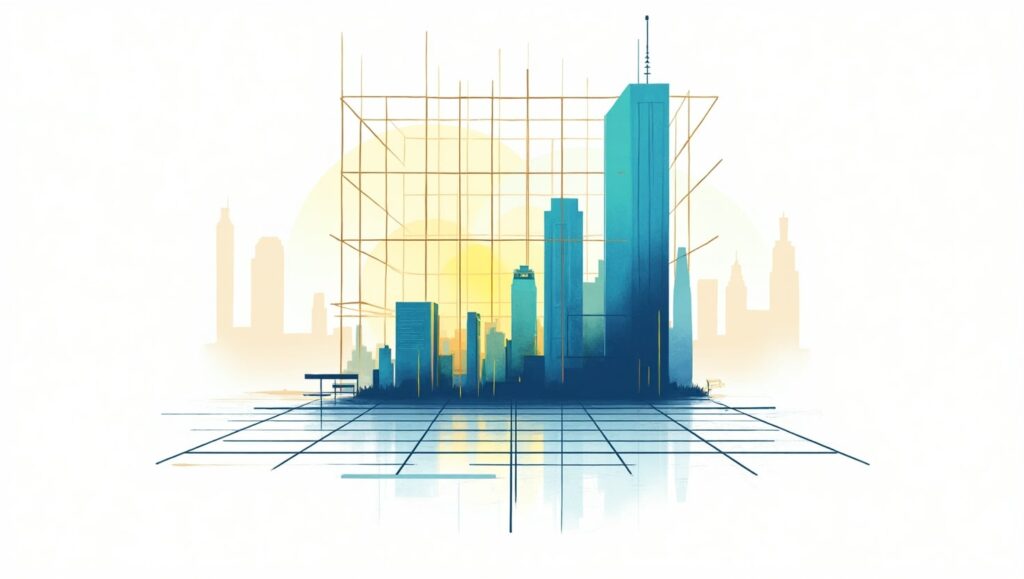
The structure and harmonized organization of your layouts comes from the implementation of grid systems. Every element in your design benefits from proper organization through grid systems which creates consistent and balanced presentations. The implementation of grids enhances professional appearance in all output formats including websites and posters with business cards. The hidden lines work together to maintain proper alignment as well as keep all elements symmetrical while following proportions. Many new designers fail to incorporate grids into their work which is among the most important yet fundamental graphic design tips at their level. The design tools Adobe XD, Figma, and Illustrator come with pre-installed grid components that provide assistance for your design organization. A grid system works properly when it produces results which are both easier to understand and attractively designed.
6. Get Comfortable with Design Software
Tools you select for work have equivalent importance to your design methods. Knowledge of professional design software acts as a fundamental requirement for designers who want to develop their career. The professional standard in design industry uses Adobe Creative Suite along with its core components which include Photoshop Illustrator and InDesign. The budget-conscious designer has multiple excellent tool options available between GIMP, Canva, Figma and Affinity Designer. Beginners should spend their time on these platforms for developing their proficiency and assurance to handle design projects. Online tutorial study along with sample work experience and project challenges provide exceptional strategies to develop graphic design software abilities. Learning how to handle tools creates freedom through better implementation of your ideas.
7. Incorporate Visual Hierarchy
The design composition of elements develops visual hierarchy through strategic importance-based organization. Every design requires specific elements which must appear more dominant to direct viewer attention. You can construct a clear flow by applying different elements of size contrast and position and color choice and alignment purposes. The primary text needs strong bold typefaces that stand out followed by supporting text with delicate typefaces. The use of these tips from Graphic Design creates a clear understanding of messages that prevents any confusion among viewers. When hierarchy is missing in design the overall composition becomes difficult to follow and disorderly. Hierarchical organization systems enhance both route navigation and streamlines communication processes between users.
8. Use High-Quality Images and Graphics

Any design becomes less effective when using poor-quality images because low-resolution pictures diminish the entire work. Your project requires high-resolution sharp images which should remain faithful to your branding along with the project’s overall mood. Vector file types provide scalability for logos or other icons while maintaining high clarity. Select images that demonstrate genuine authenticity instead of default stock pictures. Unsplash together with Pexels and Freepik are websites that provide extensive collections of fee-based assets and free options. The below Graphic Design Tips function as fundamental elements for achieving professional appearance in every design. Design consistency across image quality and color applications as well as visual elements strengthens your designs while it helps your audience develop confidence in you.
9. Seek Feedback and Revise

Design is an iterative process. Most initial drafts served as foundation for better creatio.ns Find willing supporters in your friends or seek help from designers on online communities to receive helpful critique about your work. Users can gain valuable insights through the online communities of r/design_critiques at Reddit and the Discord groups. Always keep an open mind while listening to feedback because you must prepare yourself to revise repeatedly. Every beginner must learn how to accept feedback properly because it represents fundamental growth in graphic design practice. The more times you revise your work the more excellence you approach. You should view feedback as an advancement chance instead of a failure.
10. Keep Learning and Stay Inspired
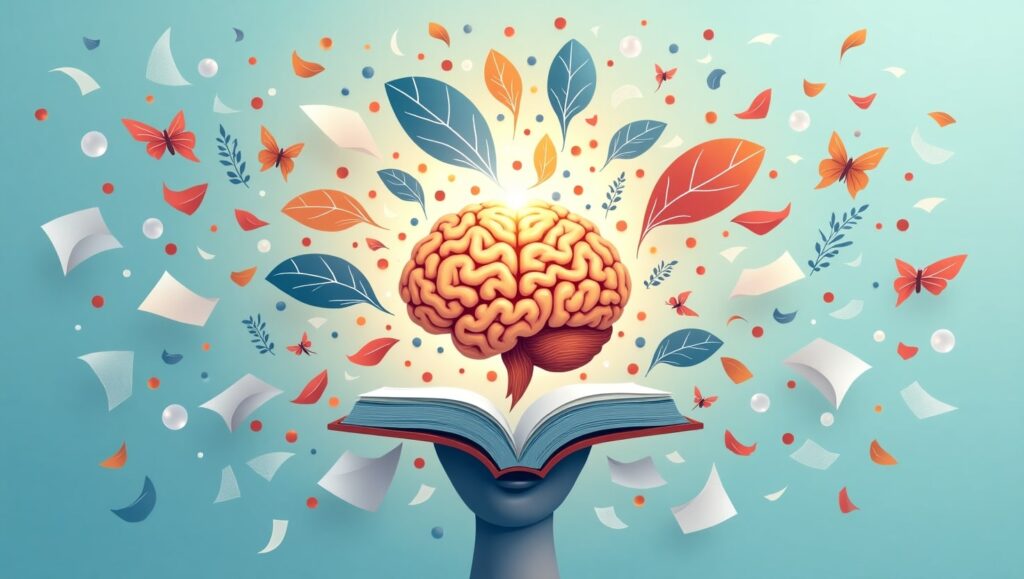
Design is both exceptionally broad and consistently evolving. Your relevance depends on your ability to remain innovative through constant education and learning. Become a subscriber of leading designers on YouTube along with online course enrollment and regular Behance and Dribbble portfolio exploration of top designers combined with daily blog reading. Being exposed to new styles along with techniques and trends creates continuous creativity. A perpetual trait of graphic design knowledge is always remaining curious. Your love for ongoing education should stay active because you will discover fresh things such as typefaces and motion graphics and advanced software tools. The environment around you contains abundant inspiration which you need to transform into your original approach.
FAQs
Starters in graphic design must understand which tips will prove most essential for their learning journey.
Your most important Graphic Design Tips consist of mastering design fundamentals together with typography and layout while selecting proper colors and utilizing high-quality images and maintaining regular practice of your art.
What would be the suitable software for an entrance-level graphic designer?
Your first steps as a beginner should be Adobe Photoshop and Illustrator alongside InDesign. The free and cost-efficient graphic design options include Canva as well as GIMP along with Figma and Affinity Designer. Learning the tools to proficiency will enable you to apply the Graphic Design Tips with better effectiveness.
The basic question is this: What strategies exist for developing my graphic design abilities?
Regular practice along with participation in online design communities and seeking expert guidance and accepting constructive criticism from both communities and industry professionals will help you advance. Daily application of different Graphic Design Tips will enhance your design abilities.
White space stands out as a vital element in design since it provides vital breathing space for designs to stand out.
White space provides space for breath by improving focus which makes elements easier to recognize in design work. White space remains one of the great Graphic Design Tips because it balances design appearance and enhances readability.
Which approaches can I use to build my unique design approach?
Testing multiple styles alongside tool testing and designer examinations and personal appeal assessments will lead to style development. Active practice with implemented custom Graphic Design Tips throughout time will forge a distinctive creative identity for you.
Conclusion
Virtuosity in graphic design requires more than a short time to develop. Achieving mastery in this field demands continual effort and innovative thinking together with fundamental knowledge understanding. The collection of top 10 exciting Graphic Design Tips serves as a foundation to support beginner users in their progress toward stability. Mastering design principles and typography while developing your style requires experimentation with color and tools and receiving feedback since these elements lead to designer confidence. Utilizing these same Graphic Design Tips in numerous projects leads to the creation of striking and effective designs which are both visually appealing and impactful. Your strength in visual design grows while you maintain your passion for designing because each new design adds more depth to your practice.
-
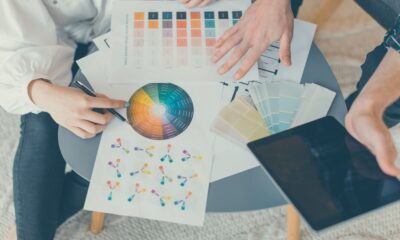
 Graphics Design1 year ago
Graphics Design1 year ago7.Exploring the Importance of Color Theory Charts
-

 Graphics Design8 months ago
Graphics Design8 months ago10 Stunning Gradient Design Trends You Need to Know in 2024
-

 Graphics Design1 year ago
Graphics Design1 year ago15.The Importance of Effective Flyer Design in Marketing
-
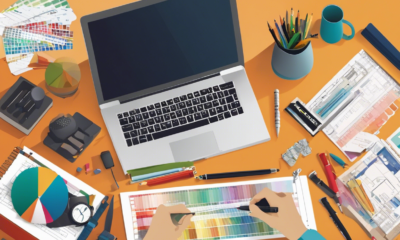
 Graphics Design1 year ago
Graphics Design1 year ago14.Mastering the Art of Print Design: Tips and Tricks
-
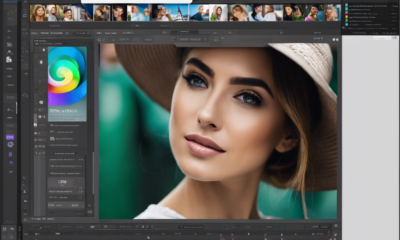
 Graphics Design1 year ago
Graphics Design1 year ago13.Exploring the Latest Trends in Photo Editing Software
-
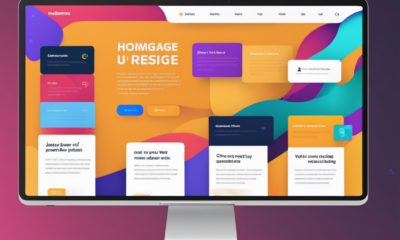
 Graphics Design1 year ago
Graphics Design1 year ago10.The Latest Trends in Web Design and Development
-

 Graphics Design11 months ago
Graphics Design11 months ago29.Retro Design Is Making a Comeback in Modern Spaces
-
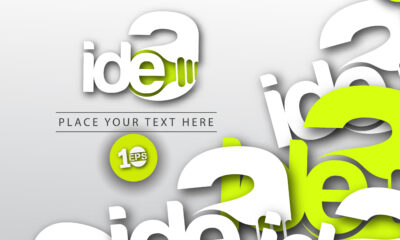
 Graphics Design1 year ago
Graphics Design1 year ago1.The Transforming Power of Typography on Graphic Design





mail temp
October 4, 2024 at 6:49 am
I appreciate you sharing this blog post. Thanks Again. Cool.
Louetta Summarell
October 26, 2024 at 7:20 am
I’d have to examine with you here. Which is not one thing I usually do! I take pleasure in reading a post that may make folks think. Additionally, thanks for permitting me to comment!
latex suit
November 6, 2024 at 1:35 pm
We’re a group of volunteers and opening a new scheme in our community. Your site provided us with valuable info to work on. You have done an impressive job and our entire community will be thankful to you.
We ve been told that way to attack in the
November 20, 2024 at 6:15 am
We ve been told that way to attack in the
baddiehub lesbian
December 8, 2024 at 6:25 am
Baddiehub You’re so awesome! I don’t believe I have read a single thing like that before. So great to find someone with some original thoughts on this topic. Really.. thank you for starting this up. This website is something that is needed on the internet, someone with a little originality!